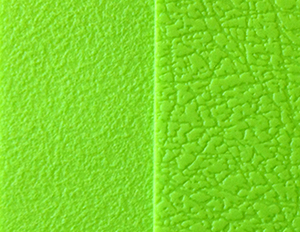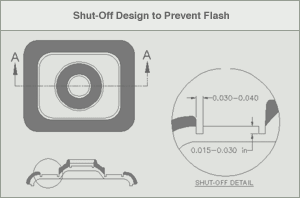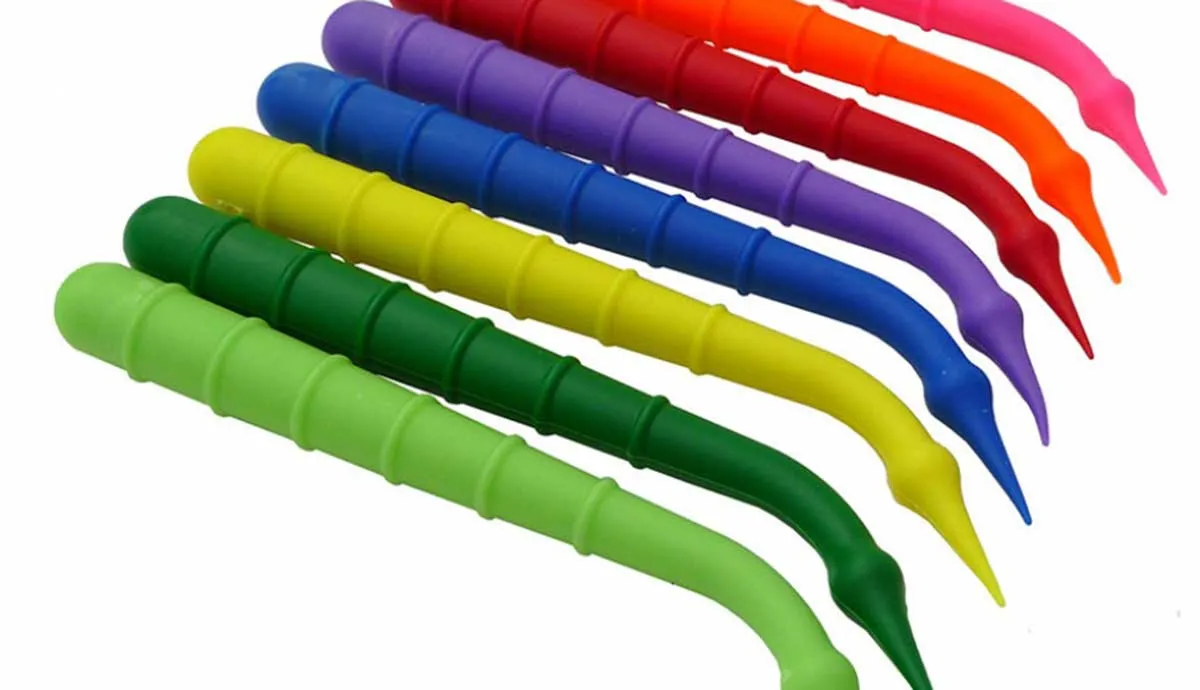Consumer products, subject to fierce competitive pressures, often rely on stylish surfaces aesthetics for differentiation. The following are several ways to improve the surface aesthetics of your part design:
1. Texture
A wide range of textures can add sensory interest to a product. Adding a TPE texture on an overmolded surface is a good way to improve the product appearance and give it a unique surface experience. It also minimizes the appearance of surface defects. Adding a texture as light as 0.001” can help to hide flow marks, weld lines, and may aid in lowering the cycle time of creating a product. By varying texture, a material without a natural matte finish can be made to look dull, light refraction can be adjusted, and grip of the application can be enhanced.

TPEs can provide unusual texturing, such as a bubble or ridged surface or a leather-like feel for phone and tablet cases, as well as combinations of different textures that accentuate consumer functionality. Textured TPEs can replace expensive secondary painting or adhesion operations. Certain textures will lead to a perceived hardness that is higher (or lower) than the actual hardness of the TPE. As a result, the TPE surface texture should be taken into consideration during the material selection phase of the product development process.
2. Gating
Whether you select a hot runner or cold runner for your product design, gating can greatly change the aesthetics of your part. Tab gates, pin gates, fan gates, valve gates, etc. all have advantages and disadvantages. Selecting an area of the part surface that is hidden or covered for your gate location can help, but that isn’t always possible. Gating from the thickest area of your part to the thinnest area of your part is the optimal way to fill, and balancing your runners will create part consistency in all cavities.
3. Venting/Steel Crush
Outgassing of TPEs can cause multiple aesthetic defects. Gas traps can cause sink marks, short shots or even low bond strength between an overmold and a substrate. In order to eliminate these issues, proper venting and steel crush need to be utilized. Vent depths for TPEs are typically between 0.0005” and 0.001”. They should be located at the end of flow or around the perimeter of the part, if possible.

When designing an overmold, allowing the steel of the second shot tool to crush into the substrate will hold the substrate in place, create a clean line between TPE and substrate, and create venting in locations where other vent methods will not work.
4. Gloss or Matte Finish
Most GLS TPE materials replicate the mold surface fairly well. To produce a glossy finish, a polished mold is required and an unfilled grade should be used. A highly polished tool and a transparent material are required to produce a part with good clarity. If a matte finish is required, a rougher mold texture should be used (or a GLS product such as GLS Versalloy™ TPV Alloys, which naturally produce a matte surface). Matte surfaces can also help to hide any flow marks or other surface defects. Vapor honing, sand or bead blasting and chemical etching are also used to produce textured surfaces with varying degrees of gloss.
To learn more about how TPE materials can benefit your product's surface aesthetics, contact an expert at Avient today.

